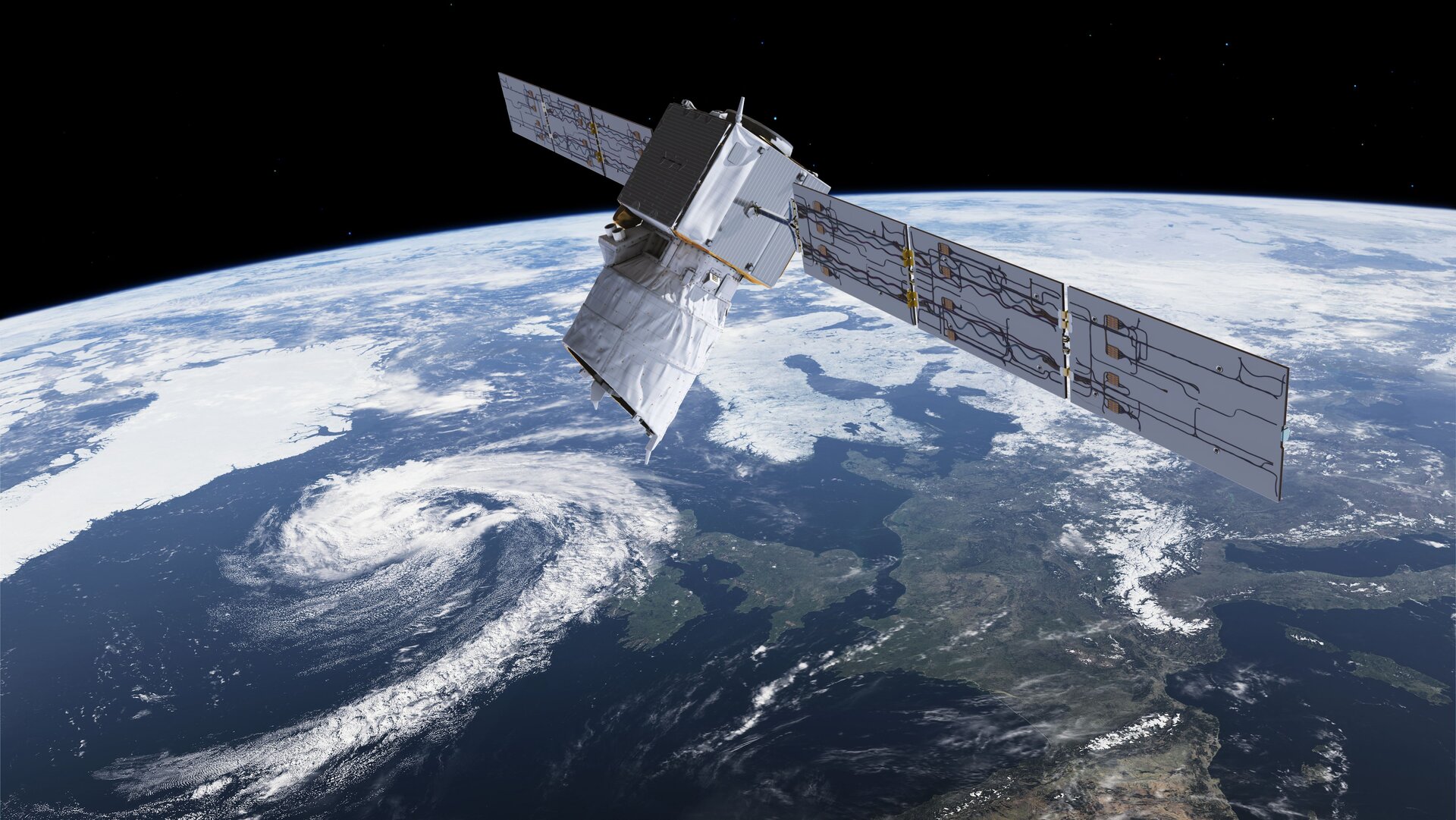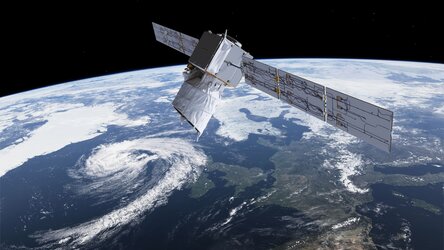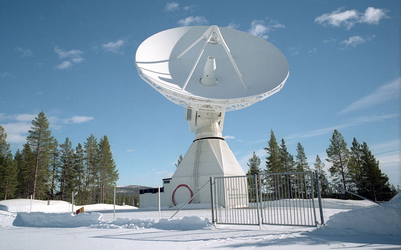Facts and figures
Launched: 22 August 2018 from Europe's Spaceport in Kourou, French Guiana
Launcher: Vega
Satellite: cubic platform and cylindrical instrument structure, weighing 1360 kg (including 266 kg fuel)
Instrument: direct detection Doppler wind lidar, Aladin, operated at 355 nm; separate detection of molecular and particle backscatter (high-spectral resolution)
Mass: 1360 kg (including fuel)
Dimensions: 4.60 × 1.9 × 2.0 m (launch configuration)
Power: 2.4 kW deployable solar array (2×3 panels) with GaAs cells; 84 Ah Li-ion battery
Orbit: altitude of 320 km and inclination of 97°; Sun-synchronous, 7-day repeat cycle
Mission control: ESA’s European Space Operations Centre (ESOC) in Darmstadt, Germany
Communication: ground stations in Kiruna, Sweden (telemetry); Svalbard, Norway and Troll, Antarctica (science data)
Data processing: Tromsø, Norway, managed by ESA’s Centre for Earth Observation (ESRIN) in Frascati, Italy
Mission life: exceeding its planned 3-year life in orbit, the mission ended on 28 July 2023
Wind profile retrieval: European Centre for Medium-Range Weather Forecasts (ECMWF) in Reading, UK
Project and commissioning: managed at ESA’s European Space Research and Technology Centre (ESTEC) in Noordwijk, The Netherlands
Operations: managed at ESA’s Centre for Earth Observation (ESRIN) in Frascati, Italy
Prime contractor: Airbus Defence and Space













